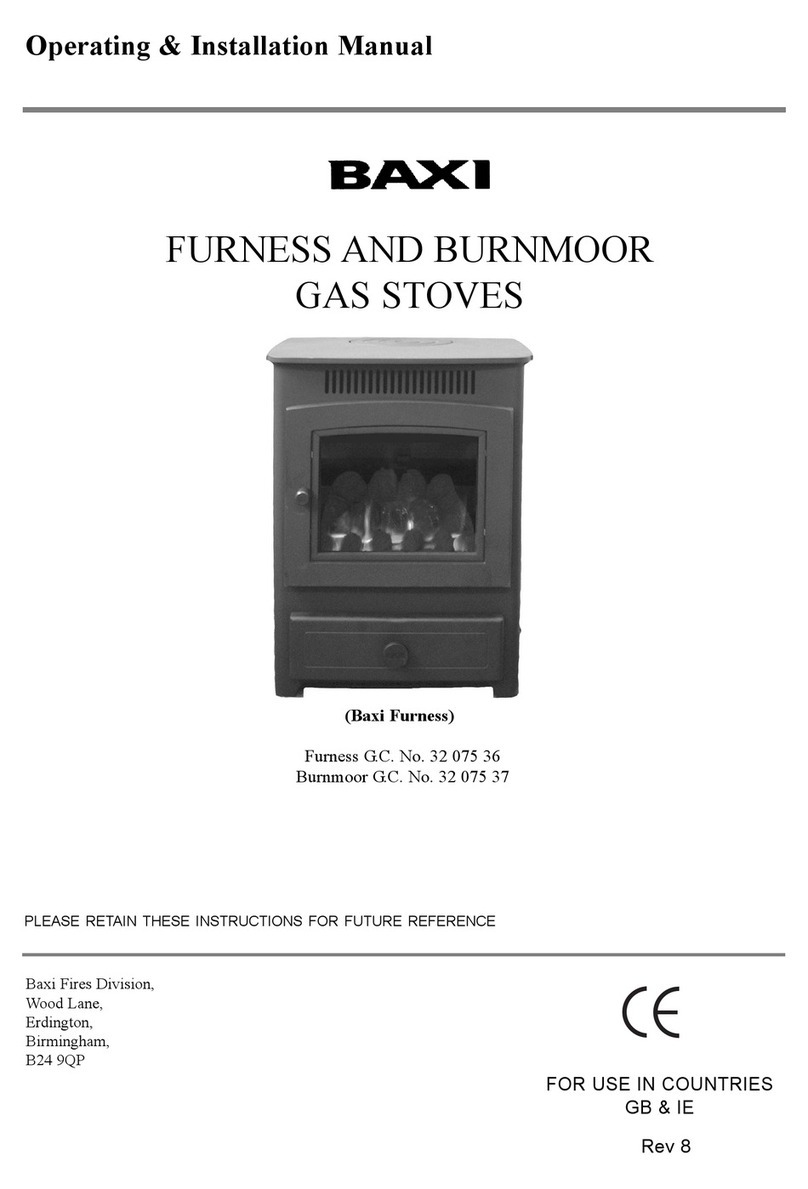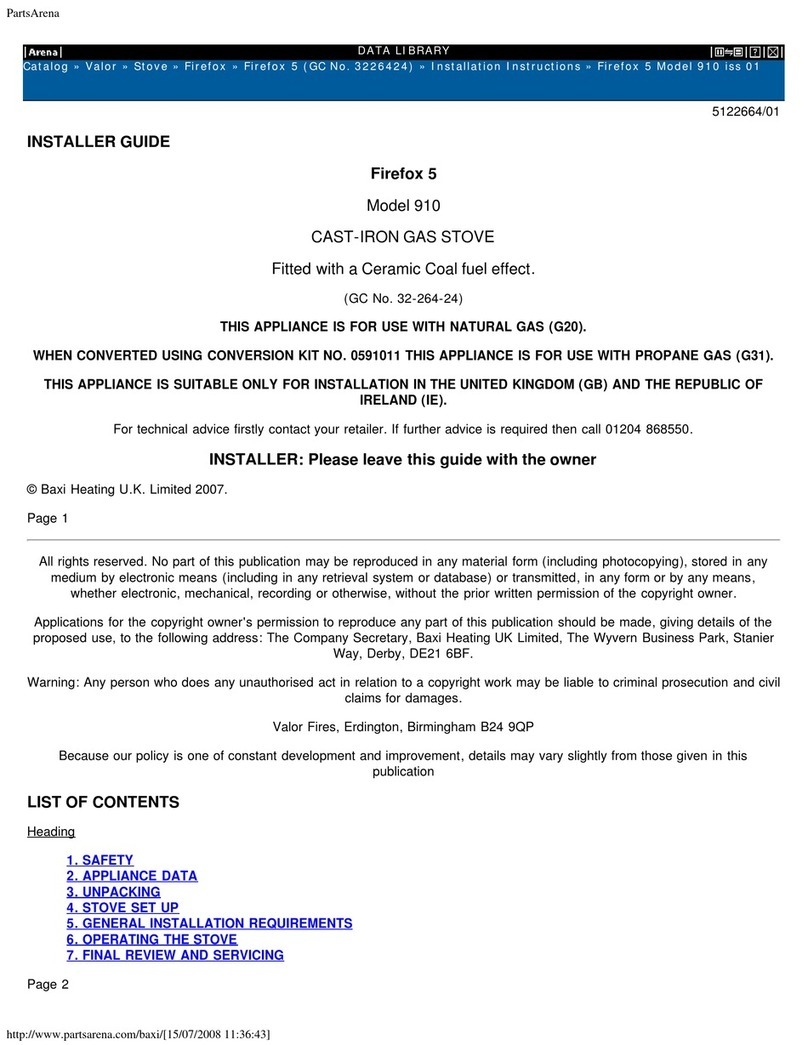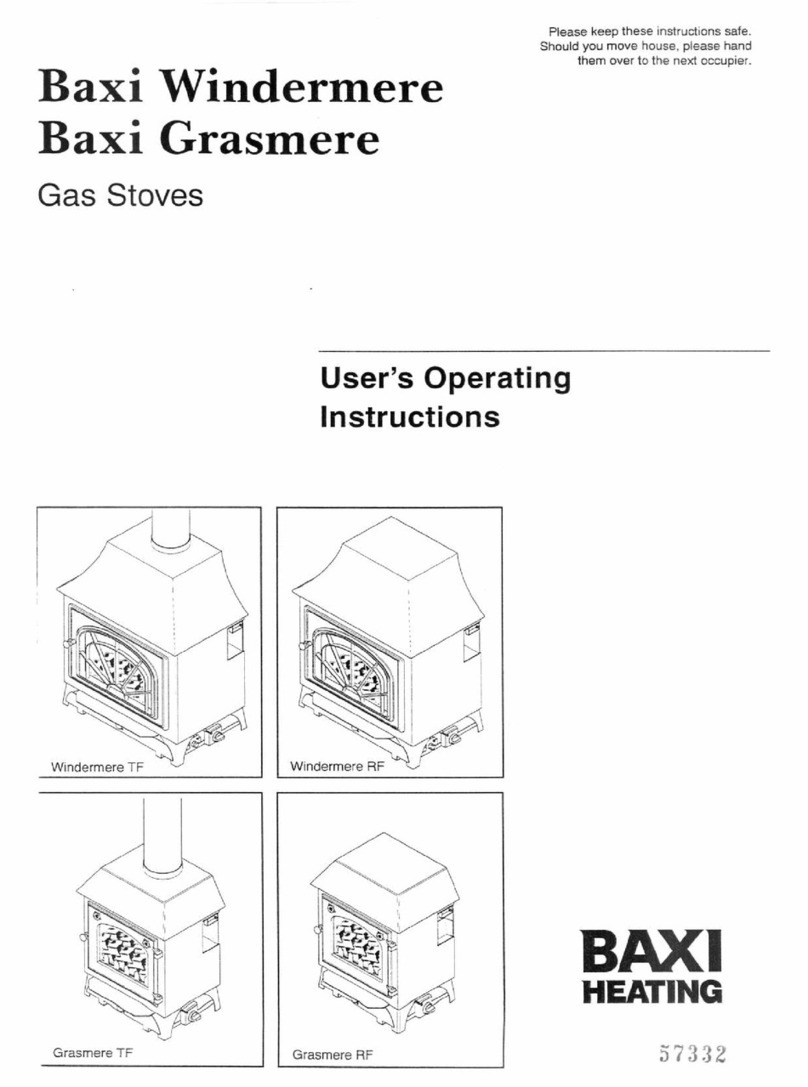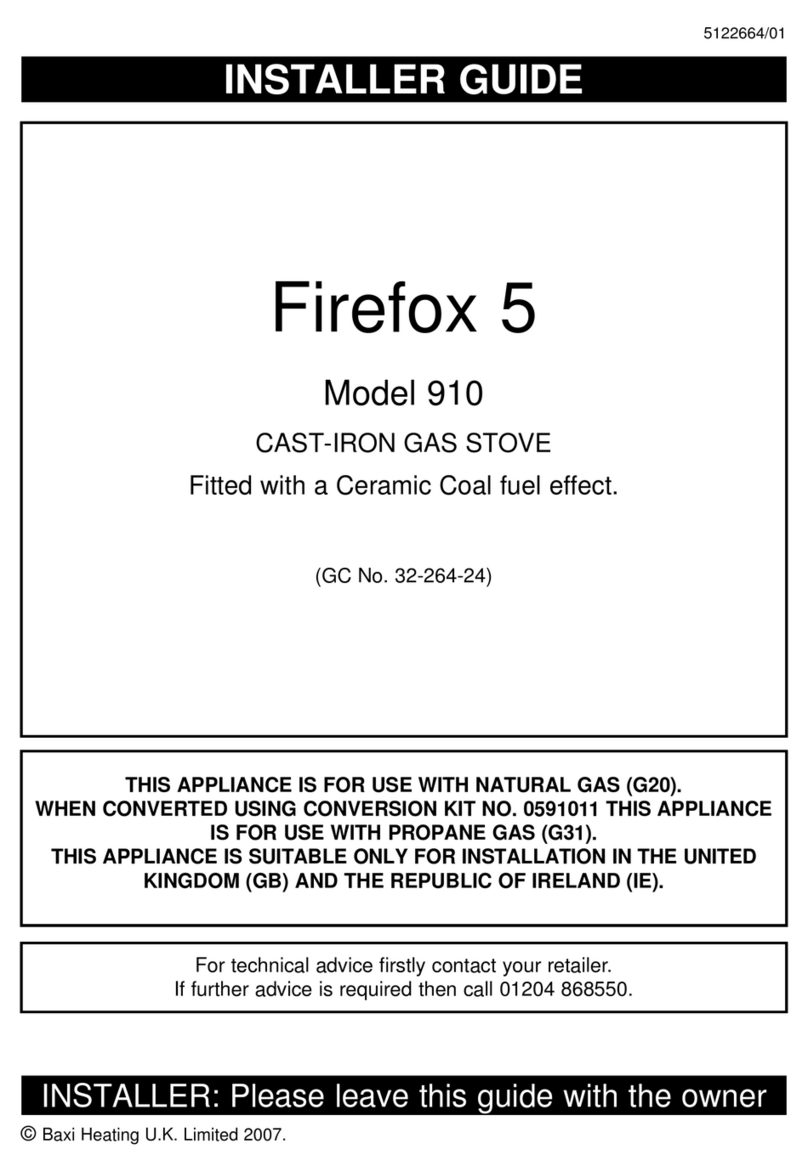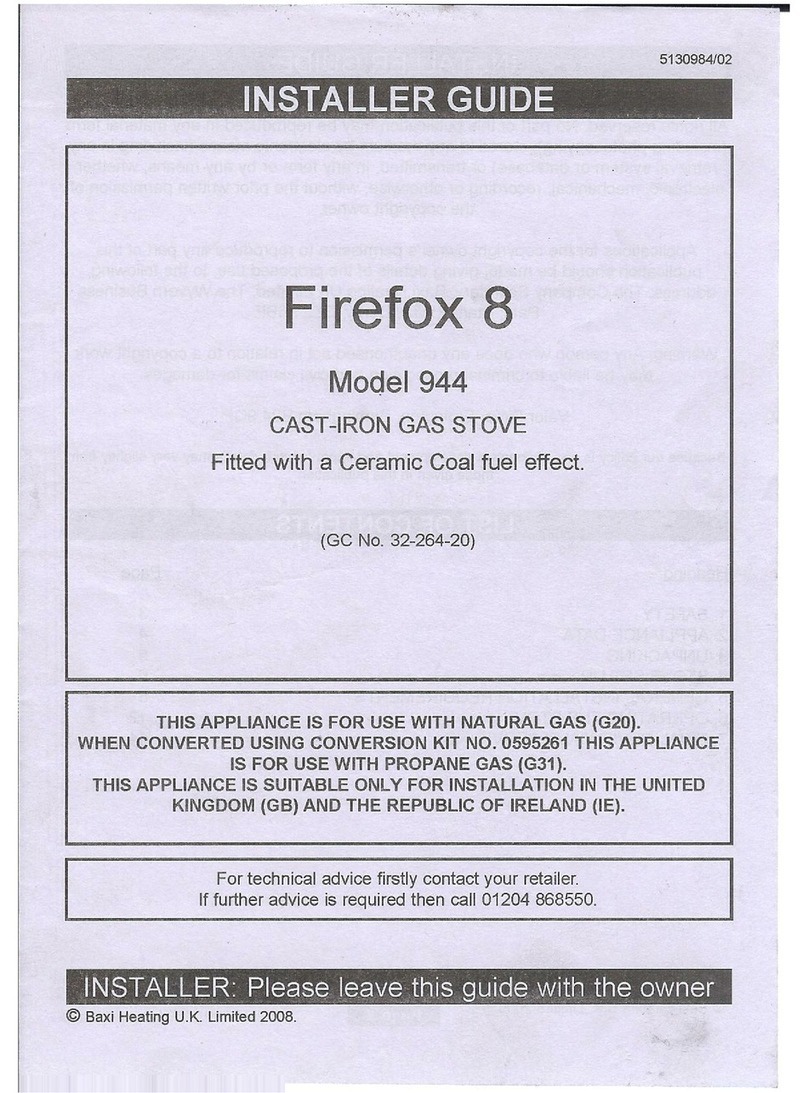
Supplied By www.heating spares.co Tel. 0161 620 6677
1.0 Introduction – Page 4
1.1 Description
1. The Baxi Windermere RF and TF and Grasmere RF and
TF are gas fired stove - style appliances with heat inputs of
8.17 kW (27,876 Btu/h) and 6.5 kW (22,178 Btu/h)
respectively at maximum setting. They are designed to be
used on Natural Gas only at a setting pressure of 20mbar
on an installation with a governed meter. The appliances
are intended for heating and decorative purposes.
2. For details of Propane appliances see section 13.0
Propane Models.
3. They incorporate a safety feature in the form of a spillage
monitoring system which must not be adjusted or
bypassed.
4. The stove is controlled by a knob which is positioned at the
lower right hand side of the appliance (Fig1). The knob has
four positions:
OFF IGN LOW HIGH
5. The pilot will be lit at IGN.
1.2 Installation
1. Prior to installation, ensure that the local distribution
condition (identification of the type of gas and pressure)
and the adjustment of the appliance are compatible.
2. The appliance is suitable for installation only in GB. and
I.E. and should be installed in accordance with the rules in
force. For Ireland install in accordance with l.S.813
“INSTALLATION OF GAS APPLIANCES”. The
installation must be carried out by a CORGI Registered
Installer or other competent person and be in accordance
with the relevant requirements of the current GAS
SAFETY (Installation and Use) REGULATIONS (as
amended), the BUILDING REGULATIONS issued by the
Department of the Environment, BUILDING STANDARDS
(Scotland) (Consolidation) REGULATIONS issued by the
Scottish Development Department and the LOCAL
BUILDING REGULATIONS. Where no specific
instructions are given, reference should be made to the
relevant BRITISH STANDARD CODES OF PRACTICE.
2. This appliance must be installed in accordance with
the manufacturers instructions and the rules in force
and only used in a suitably ventilated location.
3. Read the instructions before installing or using this
appliance.
Notice
Discolouration of wall surfaces
Most heating appliances generate warm air convection currents
and transfer heat to any wall surface against which they are
situated.
Some soft furnishings (such as blown vinyl wallpapers) may not
be suitable for use where they are subject to temperatures
above normal room levels and the manufacturer’s advice should
be sought before using this type of wall covering adjacent to any
heating appliance.
The likelihood of wall staining from convected air currents will be
increased in environments where high levels of tobacco smoke
or other contaminants exist.
1.3 Important Information
This product contains Refractory Ceramic Fibres (R.C.F.) which
are man-made vitreous silicate fibres. Excessive exposure to
these materials may cause temporary irritation to eyes, skin and
respiratory tract. Care must be taken when handling these
articles to ensure the release of dust or fibres is kept to a
minimum.
To ensure that the release of fibres from these articles is kept to
a minimum, during installation and servicing it is recommended
that a H.E.P.A. filtered vacuum is used to remove any dust, soot
or other debris accumulated in and around the appliance. This
should be performed before and after working on the
installation.
It is recommended that any replaced item(s) are not broken up
but sealed within heavy duty polythene bags and clearly labelled
“R.C.F. waste”. This is not classified as ‘hazardous waste” and
may be disposed of at a tipping site licensed for the disposal of
industrial waste.
Protective clothing is not required when handling these articles
but it is recommended that gloves are worn and the normal
hygiene rules of not smoking, eating or drinking in the work area
are followed and always wash hands before eating or drinking.







